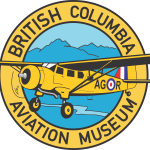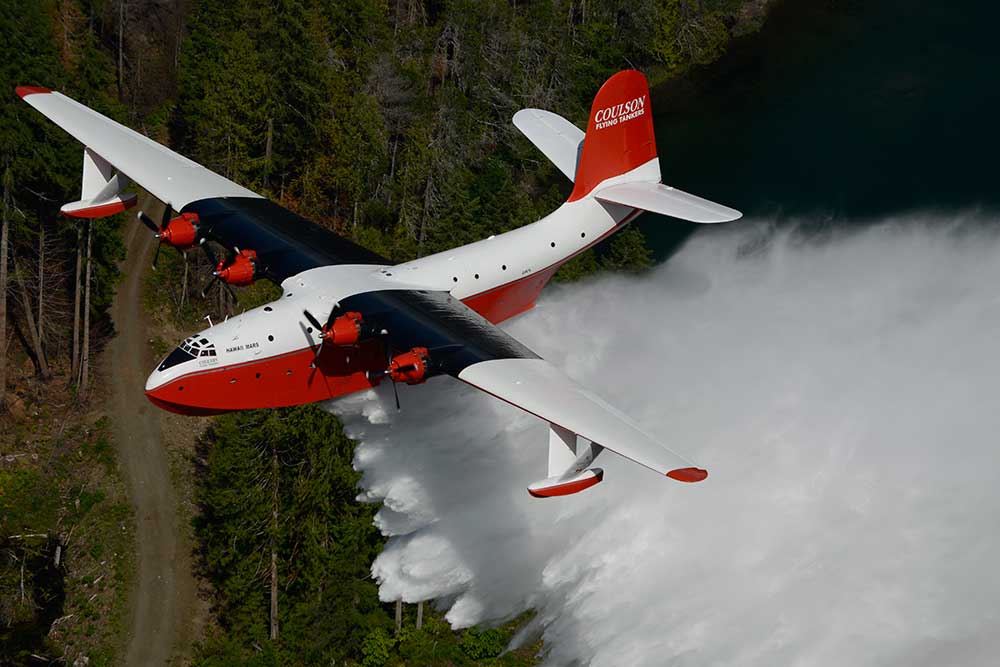SEPTEMBER 24, 2024, VICTORIA INTERNATIONAL AIRPORT: The BC Aviation Museum is pleased to finally announce the moment everyone has been waiting for – the public opening of the iconic Hawaii Mars water bomber from Saturday, September 28, 2024 and ongoing into the fall!
The opening of the aircraft follows closely after its hugely popular flyby and arrival with the Canadian Snowbirds on August 11 when over 200,000 people on the Island, and hundreds of thousands of people online, watched this spectacular Forever Home flight.
As British Columbia’s most famous aircraft, the Hawaii Mars now begins its transformation from rescued intact water bomber to protected and celebrated public attraction as the crown jewel in the museum’s growing BC Wildfire Aviation exhibit.
From this Saturday, the public is invited to see the Hawaii Mars up close to personally experience its amazing historical and cultural significance. This is the first time in its 80-year history that it is being made available to visitors daily with museum tour guides to present the aircraft.
There are potentially five phases of increasing the presentation, interaction and preservation of the Hawaii Mars over the next few years, and phase one begins with its opening this weekend.
Please read carefully the details of phase one below so that everyone understands what to expect when arriving at the museum anytime in the coming months.
- NOT YET MODIFIED: The Hawaii Mars is a huge retired and intact still-flyable water bomber that has not yet been modified for having large groups of people inside. Starting next month, dedicated volunteers will carefully prepare the aircraft to more easily allow access while also increasing conservation measures.
- ENJOY WITH A TOUR GUIDE: From September 28, visitors may enter and explore certain parts of the aircraft with a tour guide present, including the flight deck to see the pilot’s seats and the beautiful view of the airport from the cockpit.
- LIMITED ACCESSIBILITY: Please be aware there is limited accessibility inside the aircraft. Just like touring the various decks of a retired warship that requires visitors to climb in and out of tight spaces and move up and down steep vertical ladders, during phase one visitors moving through the Hawaii Mars will be required to do the same, just like the flight crews nimbly moved through the world’s largest water bomber for five decades.
- PHASE TWO TO INCREASE ACCESSIBILITY: If limited accessibility is a concern for any visitor, please postpone entering the aircraft until phase two is complete when the lower deck has a long flat surface.
- FLIGHT DECK: The upper flightdeck will always only be accessible by the original steep stairs through all presentation phases, similar to how the famous Spruce Goose has had its cockpit open to the public when it has been on display at various locations. The Hawaii Mars is a vintage, rescued intact aircraft that is to hopefully become certified by Heritage Canada, which means maintaining the Hawaii Mars in a state as close to its original configuration as possible.
- TEMPORARY CLOSURES: At times in the coming months, the volunteers will be required to close certain spaces inside the aircraft, including the flight deck, when accessibility and preservation work is required. Visitors should be aware that on some days the whole tour of the Hawaii Mars might be limited. These specific workdays might not be announced prior due to the complexity of what is required, and therefore the museum appreciates everyone’s understanding in advance.
- FUTURE PHASES EXPAND THE EXPERIENCE: The museum aims to eventually expand the Hawaii Mars interactive options for visitors. While each transformation phase of the exhibit has yet to be confirmed, they may include the following;
- Phase two – further access to more areas of the aircraft
- Phase three – increased visitor experiences – for example, visitors might be able to strap into flight simulators to fly the aircraft on water bombing runs.
- Phase four – increased interactive learning features and easier access
- Phase five – moving the aircraft into a new hangar for permanent display
LOCATION:
BC Aviation Museum, 1910 Norseman Road, North Saanich, BC, Canada, V8L 5V5
HOURS:
Open Daily, 10:00 a.m.to 4:00 p.m.
Except Christmas Day, Boxing Day and New Year’s Day
ADMISSION:
Note: there is no extra fee to enter the Hawaii Mars at this time
Adult $17.00 + GST
Seniors $14.00 + GST
Youth (13-18) $14.00 + GST
Children (6-12) $7.00 the + GST
Military (active, veteran, cadet) $9.00 + GST
Adult Group (10 or more prebooked) $12.00 + GST
Children (5yrs and under) Free when accompanied by an adult family member.
ICONIC AND GLOBAL
From World War Two through to the Korean War, and then for over five decades in Canada, the Mars program had an incredibly positive impact, especially in Canadian aviation forest firefighting. The aircraft is beloved by many especially since the Hawaii Mars is one of only two remaining.
As the largest water bomber in the world with a 200-foot wingspan, the aircraft is one of the biggest attractions in Victoria and on Vancouver Island. In its firefighting days it could drop more than 25,000 litres of water on each run!
The international interest in museum’s rescue of the Hawaii Mars has made it the number one international vintage aviation story of the year. For example, there are almost 10 million hits on the museum’s social media.
SUPPORT THE HAWAII MARS RESCUE!
Please donate to the official GoFundMe campaign!

